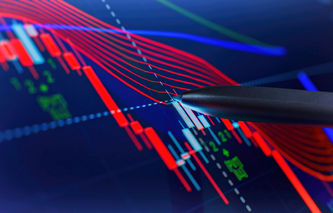Details Last Updated: Monday, 26 October 2020
Not long after its discovery, people realized the value of gold; it was both beautiful and scarce. In fact, according to the U.S. Mint, it's so rare that all the gold ever mined could fit into a cube that is just 60 feet on each side.
Another important feature of gold is its liquidity, which is an important attribute for investors. When purchased by the consumer in the form of bullion, such as the American Gold Eagle, it's both easy to store and trade. The price of gold is in constant motion, and most news reporting agencies quote the American Eagle, the Austrian Vienna Philharmonic, the Canadian Maple Leaf, as well as the South African Krugerrand. Gold is one of the most investment categories at 15%.
Preserving Wealth with Gold
One of the ways to preserve wealth when local currency is losing value is to invest in, or hold, gold. For example, with ongoing concerns over the federal budget deficit and national debt in the United States, the price of gold increased sharply in recent years. As international investors lose faith in the U.S government's ability to control its debt, gold will become more valuable relative to the dollar.
Gold is also valuable for reasons beyond investments, and this is demonstrated by the ever growing demand. Over the past decade, consumption of gold has actually exceeded production. Since production is controlled by relatively few companies, whenever the price dips below current production costs, these companies cease operations. This mechanism creates a stable floor price for gold.
Holding gold is also a good way to diversify, or hedge against a drop in the value of a portfolio of investments, since its price usually does not move in-step with the stock market.
Investment Risks
There is no guaranteed return on investment when it comes to gold. It does not pay interest like a bond or preferred stock. The central banks of many countries hold large reserves of gold. If a country were to sell off these reserves, it would create a surplus of the metal on the market, rapidly driving prices down.
In other words, since large amounts of gold are held by relatively few parties, a decision to liquidate all holdings would have an immediate downward pressure on prices. In many ways, each of these countries has a great deal of potential market power when it comes to determining the price of gold.
Investing and Owning Gold
At last count, there were roughly ten different ways to invest in gold. These options range from physical possession of the metal, storing it in local vaults, through investing in stocks and mutual funds. Listed below is a more complete list of the various ways investors can participate in the gold market:
Bullion, Coin and Jewelry
Bullion / Gold Bars: produced by refiners in increments that range from one gram through 400 ounces (25 pounds), worth nearly $760,000 at today's prices (October 2020). Typical measures include Troy ounces, kilograms, and the Tael.
Coins / Sovereign: includes the American Eagle, the Austrian Vienna Philharmonic, the Canadian Maple Leaf, the Chinese Panda, the Australian Kangaroo, and the South African Krugerrand. Many of these bullion coins are sold in quantities of one ounce bullion.
Digital Currency: Swiss banks may offer accounts where investors can quickly buy or sell gold just like any foreign currency. Digital gold currency accounts and BullionVault gold are exchanged using a similar practice.
Collectible Coins: also referred to as numismatic, or the hobby of collecting old or rare coins. Unfortunately, it is often difficult to get an accurate appraisal of a collectible coin, since its value is not limited to the amount of gold present in the coin itself, but other factors such as rareness and condition.
Jewelry: purchasing and holding gold jewelry for investment purposes is more common outside of the United States. This is an expensive way to collect gold, since a premium will be paid for the craftsmanship associated with making jewelry.
Certificates, Stocks, and Funds
Gold Certificates: a paper certificate indicating ownership of gold that is held by a financial institution. Gold certificates allow the investor to buy and sell without the worry of physically storing the metal. The Perth Mint Certificate Program (PMCP) is the only government guaranteed gold certificate program in the world.
Mining Company Stock: investing in a gold mining company can bring additional rewards as well as risks. For example, the price of the company's stock will move with the price of gold, in addition to the company's future outlook.
Exchange Traded Funds: gold exchange traded funds (GETFs) are traded on major stock exchanges including those located in London, New York, and Sydney Australia. ETFs are an easy way to gain exposure to the price of gold, without the bother of buying directly. Small commissions are normally charged for trading in GEFTs and for storing the asset.
Mutual Funds: an alternative to creating a portfolio of mining stocks, gold mutual funds eliminate the risk associated with a single company's operating performance.
Leveraged Gold Investments: includes the purchase of both stock options and futures. This type of investment is generally a leveraged one, and therefore returns the greatest rewards to the investor to match the higher risk exposure.
Factors Influencing the Price of Gold
All investments are influenced by the forces of supply and demand. Since large hoards of gold are held by relatively few parties, the price can be significantly influenced through the hoarding (buying up) or de-hoarding (selling) by these mostly governmental parties.
Generally, the price of gold is influenced more by changes in sentiment than the change in annual production (supply) or demand for items such as gold jewelry.
Central Banks
In fact, the world's central banks and the International Monetary Fund hold roughly 20% of all above ground gold as official reserves. European banks have been net sellers of approximately 500 tons of gold per year. Although difficult to measure, the most influential central banks in the world include the United States, Japan, Australia, Russia, and China.
Investor Sentiment and Inflation
Today, investor sentiment and fears of inflation play a significant role in determining the price of gold. Whenever a crisis threatens, many investors rush to buy and hold onto gold. When paper currency appears to be at risk of inflation or even hyperinflation, investors seek to purchase tangible assets; something they can hold onto, and is valued.
Gold fits that last description perfectly. It's universally valued, not easily destroyed, and it's possible to physically hold it. That's why many individuals consider gold as an inflation-proof investment, and also helps to explain the growing interest among investors in buying and holding it as an integral part of their investment portfolio.
New Investment Opportunities
Since cryptocurrencies appeared years ago, many people started to see them as a better investment opportunity for the future than gold. Cryptocurrency statistics say the reason is that they think gold is a physical asset that is finite. Cryptocurrencies are finite as well, but they have a much shorter track history.




